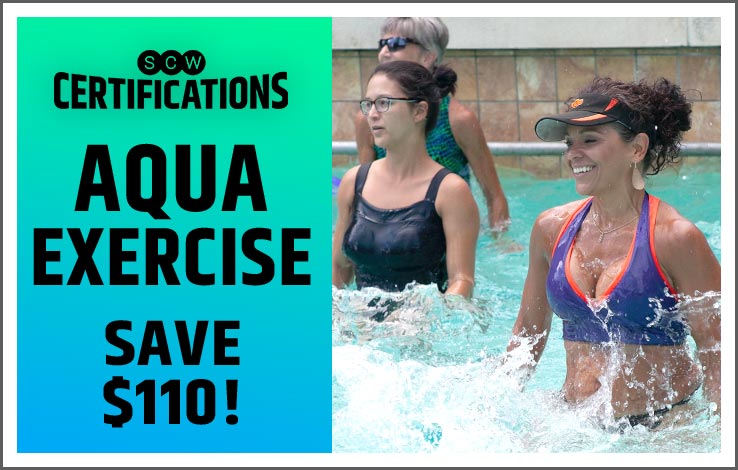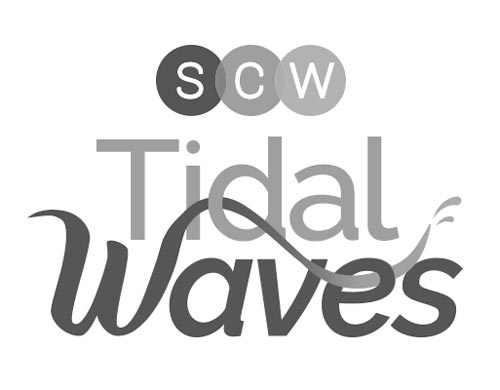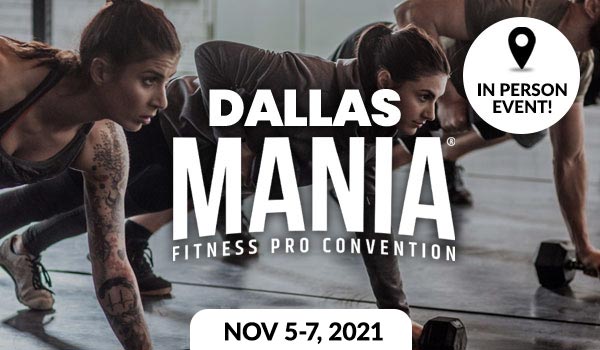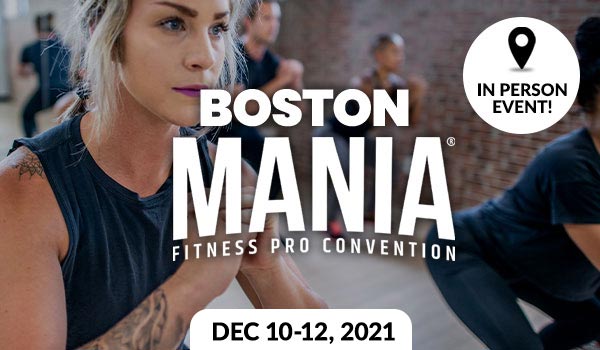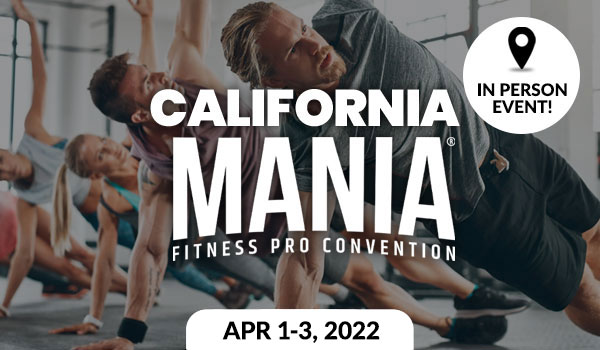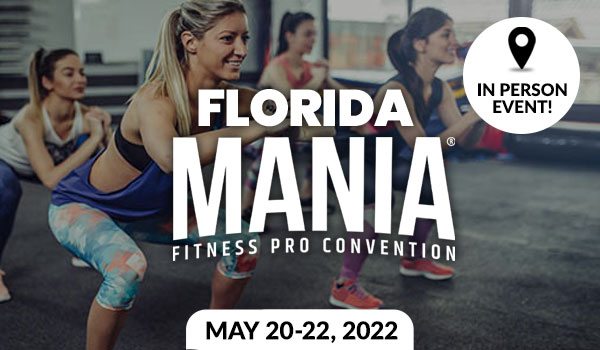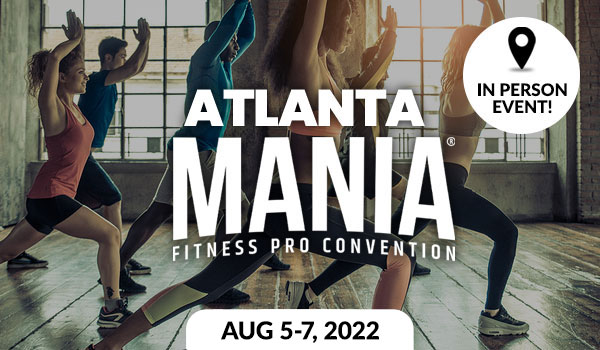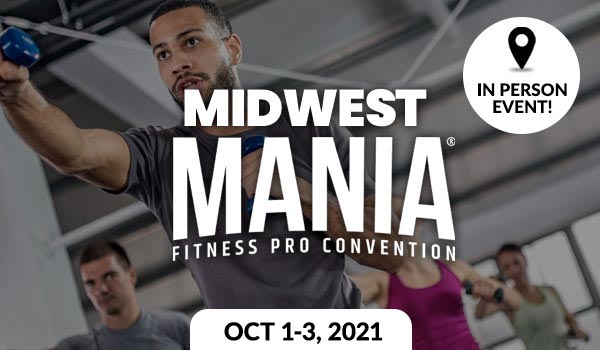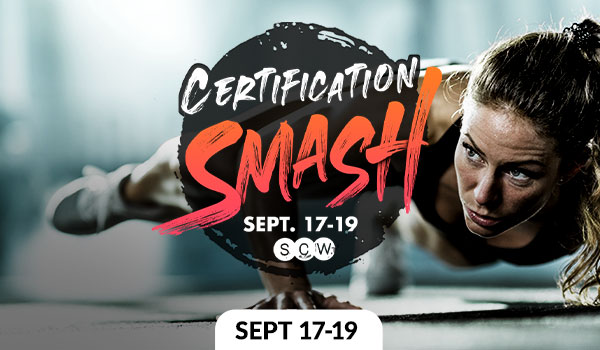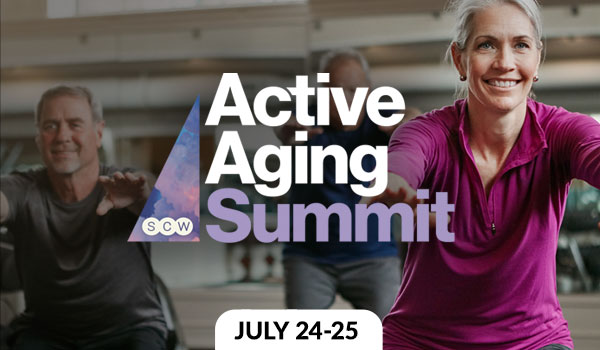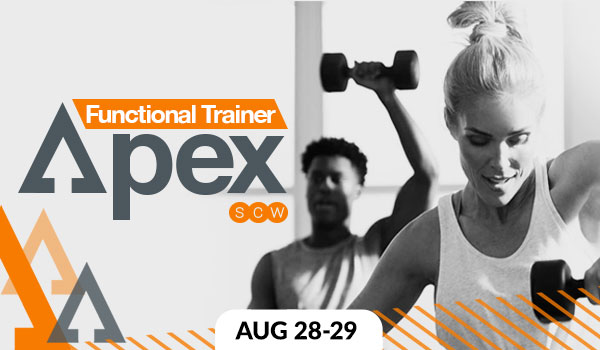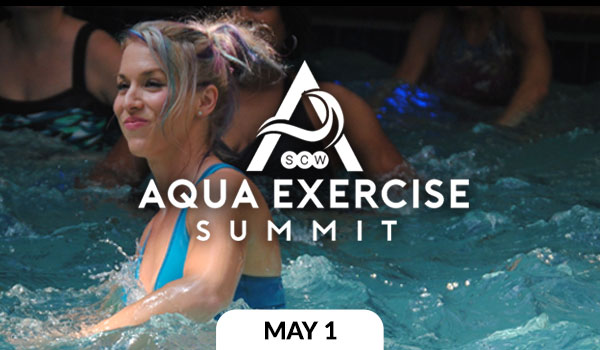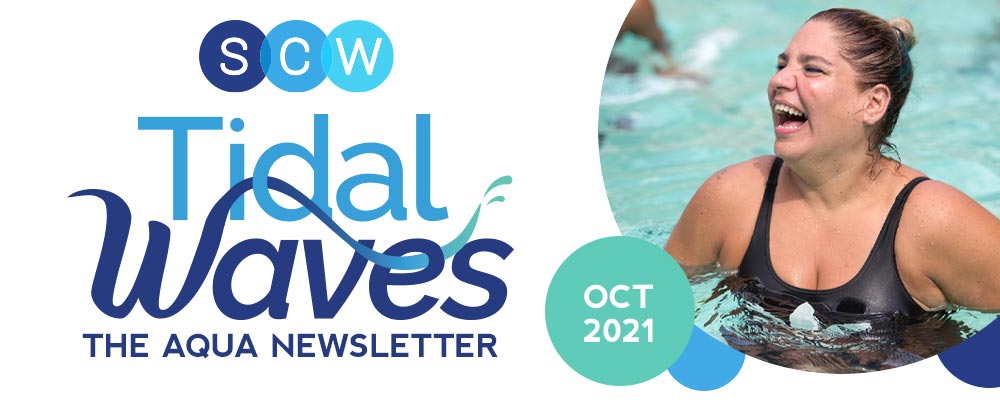
SCW Tidal Waves
October 2021
The Aqua Newsletter from SCW
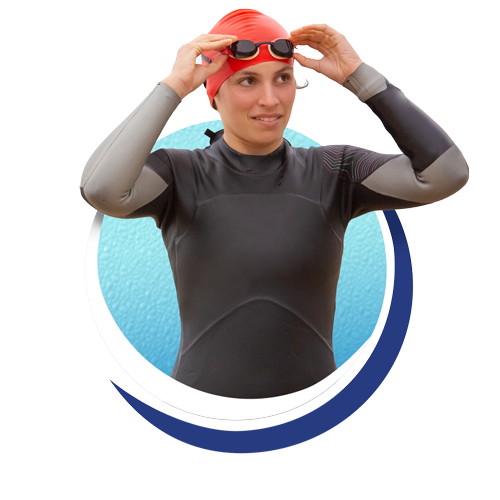
by Lisa Martin
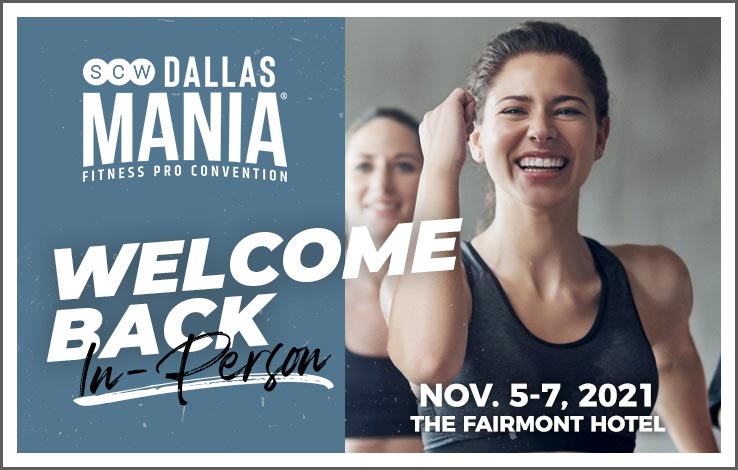 From its roots in San Diego, to a Sydney, Australia Olympic debut in 2000, triathlon participation by men and women and interest from all ages, has risen significantly. One of the largest growing demographics is the master female athlete. Why the increase in popularity? Let’s dig in to learn more about the intrigue of being a triathlete.
From its roots in San Diego, to a Sydney, Australia Olympic debut in 2000, triathlon participation by men and women and interest from all ages, has risen significantly. One of the largest growing demographics is the master female athlete. Why the increase in popularity? Let’s dig in to learn more about the intrigue of being a triathlete.
As a physical therapist, mom of three, and a female triathlete, I understand the importance of staying active, optimistic, and enthusiastic about health and fitness along with maintaining physical and mental toughness. Avoiding injury through proper training is vital especially for an athlete who includes high intensity training 4-5 days per week. Various ages can benefit from individual training with a master athlete. It is important for us, as health care providers and trainers, to understand the special needs of this population of racers or recreational athletes competing at high levels to help them stay injury free.
Naturally due to this type of sport, these individuals are cross training, active in swimming, biking, and running. The training varies: length of the event such as a sprint course, long course, or Ironman length. The benefits of each part of the event are unique and physical therapists can play a key role in injury prevention with training suggestions including sport specific strengthening, technique drills, education in biomechanics, and proper equipment needs. Each portion of the event uniquely trains our bodies benefitting one’s health and fitness.
Swimming provides an excellent fitness activity for cross training. Lifelong skills are acquired and suitable for all ages. An individual reaps outstanding cardio and strength benefits in a less injury prone environment due to the buoyancy effect of water. Swimming benefits the entire body, balancing the muscles.
- It is estimated that 65% of swimmers may experience shoulder pain.
- Approximately 90% of the propulsive force in freestyle swimming comes from the upper extremity.
- There is an average of 8-10 arm cycles every 25 meters in freestyle swimming with possibilities of overuse injuries.
- An average competitive swimmer may swim 60 – 80,000 meters/week. Thus, each shoulder may perform approximately 30,000 rotations each week. Having strong core muscles and good biomechanics are very important.
- Physical therapists can play a lead role in swim prevention programs, biomechanical analysis, sport specific strength training, and coach on swim technique drills to increase muscle memory and reduce faulty habits. They can also help in minimizing or preventing possible shoulder injuries through proper training and body evaluation.
 The goals and performance outcomes from a physical therapist include reduction of injury, no pain experienced during the swim stroke, improved efficiency, improved endurance, increased flexibility, improved stroke technique, and faster times.
The goals and performance outcomes from a physical therapist include reduction of injury, no pain experienced during the swim stroke, improved efficiency, improved endurance, increased flexibility, improved stroke technique, and faster times.
Biking or cycling is an excellent form of lifelong exercise and beneficial for cross training with running. Common bike injuries include Achilles’ tendonitis, patellar tendonitis, clavicle injuries, saddle sores, low back pain, and neck pain.
Physical therapists can perform static and dynamic bicycle checks. The right bike and fit are important to reduce injuries. Proper angles at the trunk, shoulder region, elbow, and knees can be checked. Assuring proper cycle set-up can reduce injuries at the wrist/hand, lumbar region, and knees.
Basic parameters for proper bike fit
- Correct saddle height
- Correct saddle to stem distance
- Correct fore & aft saddle position
Bicycle fit static check for proper angles
- Trunk region: 35-45 degrees angle
- Shoulder: 90 degrees
- Elbow: 15- 30 degrees
- Knee angles: 25-30 degrees, pedal @ lowest level
The last segment of a triathlon is the run. Running is a simple beautiful form of exercise: invigorating to some, relaxing to others, and energizing for almost all.
Flags for injury in runners
- Aches that increase or intensify as you run
- Aches that linger a day or two after one has stopped running
- Changes in your running, with a limp noted
Running Stats
- 50-60% of runners injured / year
- 85% within the first 2 years of running
- 93% injured during their running career
Runner’s strike the ground 800-1,500 times with every mile creating forces of 1.5-5x their body weight. Physical therapists can aid in injury reduction and perform evaluations including biomechanical analysis, advise on specific strength training, dynamic stretching, plyometrics, proper shoe wear, and proper mileage. The therapy professional will observe all three planes of motion: the sagittal plane, frontal plane, and transverse plane. This analysis will be performed simply through keen observation of motion, and/or in using computerized equipment.
General Benefits of Exercise especially Triathlon:
- Improves sleep, benefits of relaxation
- Activity increases in the hippocampus
- Improves memory
- Improves cognitive function
- Increases the release of anti-inflammatory hormones
- Increases in brain capillary density within 3 days of increased aerobic activity
- Increases in creative potential following 30 min of running
- Exposure to sunlight increases T-cell activity, and immunity
With each part of this sport, rest, exercise balance, excellent nutrition, and cross training are important. Keep a positive disposition, prepare & plan, but most of all have the time of your life!
About the Author, Lisa Martin
Lisa graduated from the University of North Dakota Medical School with a degree in Physical Therapy working in all areas including orthopedics, sports medicine, and women’s health intervention. She practices in the State of Minnesota and has provided health and fitness education presentations to physical therapy teams, nurses, MDs, and training in-services on dynamic stretching to various sports teams. She has developed skills in the areas of biomechanical analysis for runners, skiers, cyclists, & swimmers. Lisa has a SCW Mom’s in Motion Certification and has been a successful instructor for 15 years. She has a national certification through the APTA in antepartum & postpartum OB care and has designed and implemented women’s health programs successfully. Lisa is a medical educator through physicaltherapy.com and delights in clinic work.
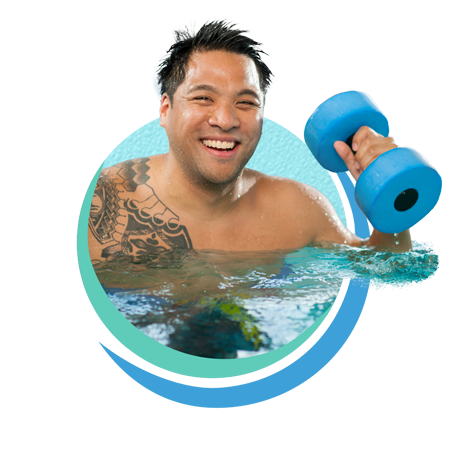
The Wonderful Effects of Water Exercise
by Cheri Kulp
“I swear, I turned 50, went to bed, woke up the next morning, and things in my body
have never been the same.”
Does this sound familiar for those of you that interact with individuals over age 50?
Is there any truth to this statement and if so, exactly what does happen? Most research agrees this chronological age causes many physical changes to occur as a natural process and result of getting older. These transformations occur in the musculoskeletal, endocrine, nervous, and cardiovascular systems as well as other systems not immediately involved in exercise and physical activity.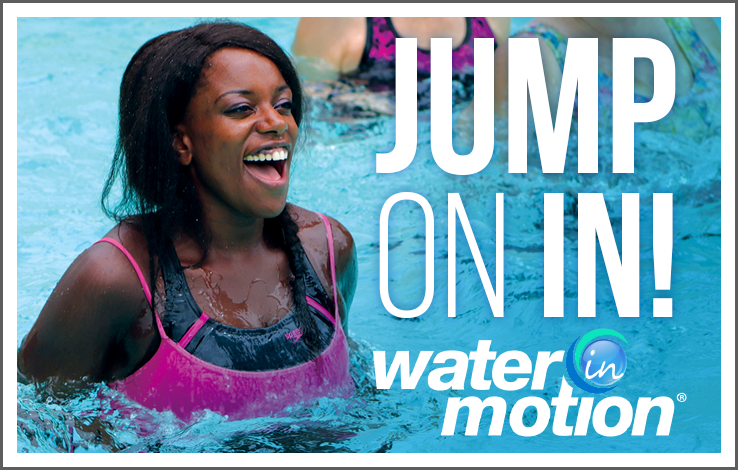
Musculoskeletal Conditions
- Osteoarthritis – an inflammation of joints due to use, wear and tear. Synovial fluid becomes less viscous and decreases in amount as we age which causes more bone-to-bone friction. Cartilage which lines the joints also becomes thin which causes more rubbing between the bones. Ligaments and tendons both become less elastic which makes the joints feel tighter.
- Osteoporosis – bone loss that results in overall bone density. Bones tend to become less dense as we age because they contain less calcium. Vitamin D levels drop as well as calcium, since the two work together.
- Osteopenia – a lower than normal bone density and precursor to osteoporosis.
- Sarcopenia – the age-associated loss of skeletal muscle mass, usually stemming from a general decrease in overall mobility. Muscle fibers exist primarily in two types, Type I (slow-twitch) and Type II (fast-twitch). Most research agrees that sarcopenia involves a loss of Type II fibers first, resulting in slower, less powerful movements.
- Gout – a form of inflammatory arthritis caused by an overabundance of uric acid. Uric acid is a byproduct of metabolism which the body should be able to clear through the kidneys and liver.
- Fractures and falls-often occur as a consequence of one or more of the previous issues.
- Dehydration – a condition that occurs when you use or lose more fluid than you take in and your body can no longer maintain normal function. Research reveals that this population is often less than adequately hydrated due to many factors.
- Basal metabolic rate – the energy required to keep the body functioning under clinical resting conditions, drops 1- 2% per decade usually due to a shift in body composition and activity.
Hormonal/Endocrine Conditions
- Diabetes – an impaired control of blood glucose when the pancreas does not or cannot make sufficient amounts of insulin, is present in two types. Active Agers should be most concerned with Type 2 diabetes which is the occurrence where muscle cells age due to wear and tear and the insulin receptors on the cell membrane become less sensitive to insulin. Insulin is the hormone made in the pancreas in response to the digestion of food.
- Menopause – a transition into a new stage of life for women. The hormones that change include testosterone, estrogen and progesterone. Following menopause, estrogen levels drop to about 50% of original levels while progesterone can drop to zero. Testosterone levels rise as we see women take on slightly more masculine characteristics such as facial hair and an increase in visceral belly fat. The drop in estrogen decreases the pliability of the arteries so, combined with increased visceral belly fat, the risk of suffering a heart attack increases.
- Thyroid dysfunction becomes a more common problem as we age. The thyroid is an endocrine gland in the neck that regulates the metabolism of the body. The thyroid stimulating hormone (TSH) regulates the pulsation of T3 and T4 which regulate the basal metabolic rate.
Neurological Conditions
- Dementia and Alzheimer’s – a slow or quick loss of mental faculties including memory and brain function.
- Parkinson’s Disease – a degenerative disorder of the central nervous system mainly affecting the motor system. Early in the course of the disease, the most obvious signs and symptoms are movement-related. These signs include shaking, rigidity, slowness of movement and difficulty with walking and gait. After those reactions, thinking and behavioral problems may arise with dementia commonly occurring in the advanced stages of the disease. Depression is the most common psychiatric symptom. Other symptoms include sensory, sleep and emotional problems. Parkinson’s disease is more common in older people with most cases occurring after age 50.
Cardiovascular Conditions
- High blood pressure or hypertension is an increase of pressure in the walls of the arteries. As we age, the arteries lose the ability to expand. Lifestyle choices can create plaque and other build up which can increase pressure on the arterial walls. If not addressed, this extra pressure can cause a stroke, aneurysm, or other sudden cardiac events.
- Strokes are also known as cerebrovascular accidents (CVA), cerebrovascular insults (CVI), or brain attacks and occur when poor blood flow to the brain results in cell death. There are two main types of strokes: ischemic, due to lack of blood flow, and hemorrhagic, due to bleeding on the brain tissues. Strokes result in part of the brain not functioning properly and may be preceded by transient ischemic attacks (TIAs), which are mini strokes.
- High blood cholesterol is caused by an overindulgence of saturated fat. There is also a genetic component which increases the amount of cholesterol that the liver makes. It is important to remember that cholesterol comes in basically two forms. High density lipoproteins (HDL) are made during exercise and play a healthy role in the body by scavenging the blood stream for low density lipoproteins (LDL).
Psychological Conditions
- Sleep issues often accompany depression and loneliness. Sleep issues may increase the risk of falling, focus, and coordination.
- Depression and loneliness are increasing according to several recent research reports. This may be a result of the growing importance of technology and introspection of many cultures; however, loss of family and friends is a likely reason as well.
Exercising in the water is a low-impact activity that takes the pressure off your bones, joints, and muscles. Water also offers natural resistance, which can help strengthen your muscles. And the best part is anyone can participate, even if they can’t swim.
For those just getting started, water walking is the perfect exercise to begin with since both feet are on the bottom and the depth is shallow, waist to chest deep. Remember to maintain good posture and walk heel to toe, just like on land.
Due to the properties of water, movements involving balance can be performed much easier and the body can work harder with less demand on the heart. As an added benefit, water offers a massaging effect on the muscles, tendons, and ligaments, assisting in lengthening tight areas and still joints.
Research over the years has shown that water exercise can improve muscular strength and endurance, bone density, decrease blood pressure as well as reduce stress. It offers a high calorie burn without impact on the body, delivers a cooling effect, helps to regulate blood sugar levels, and eases the discomforts of arthritis, pregnancy, and fibromyalgia.
Lastly, a pool tends to be a vibrant social environment and a great place to make new friends. So why wait until you are over the age of 50 to jump in? This magical place provides a comfortable, challenging workout for everyone, as well as a head start on aging optimally
Unfortunately, time isn’t on our side, and we all get older chronologically, but it is how we take care of our bodies and brains and the reaction to the physiological and psychological changes that may occur that make a difference. Proper nutrition and regular exercise are key to living out our golden years with health and vitality. Visits to doctors, as well as yearly health and wellness checks will keep us on target. Stay close to family and friends, socialize, and just enjoy life. Keep on smiling and jump on in, the water is great!
 About the Author, Cheri Kulp
About the Author, Cheri Kulp
Cheri Kulp has been a certified fitness professional for over 3 decades. She holds a degree in Special Education and is the Co-Founder of the successful WATERinMOTION® aqua dumbbell program, WATERinMOTION® Strength. Cheri is the Aquatics Director of New Mexico’s Sport & Wellness, a marathoner, triathlete, and winner of two national bodybuilding competitions. Cheri has starred in over 30 FitPro videos and shares her vast experience by presenting at SCW MANIA® conferences nationwide.
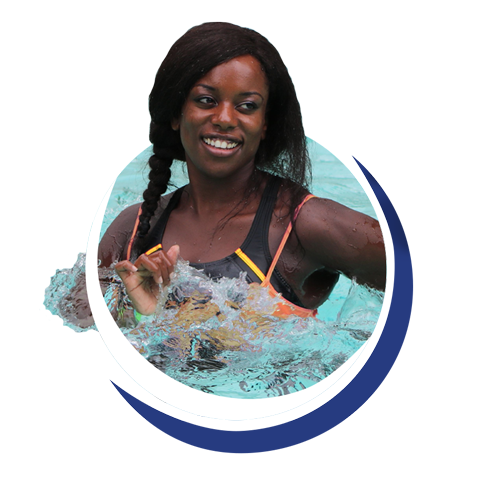
by Irene McCormick, MS, CSCS
Many water fitness instructors are brought on board as teachers by default. They are quite literally ‘thrown into the water.” As dedicated, reliable, and enthusiastic participants, they come to class one morning ready to experience yet another great water exercise session with their favorite instructor, only to find that she hasn’t shown up. All the participants are naturally concerned, and when 5-minutes turn into 15-minutes, the class is confronted with a “what should we do now” situation. Suddenly the most loyal participant, who knows the regular instructor’s choreography, takes charge. She teaches a relatively successful class but doesn’t really have a sense of exactly what she is doing in the water or why. Of course, management becomes aware of this situation and “BAM” – she’s a newly hired water-fitness instructor.
 Another all too common scenario includes the last-minute call from club management to the fitness coordinator to “find coverage” for a water-fitness class that needs a substitute. The coordinator can only find a land-based teacher to cover the water-fitness class. “But I’ve never taught water class before,” comments the land-locked leader. “Oh, that’s ok, just make some stuff up,” says the desperate coordinator. So, the land-based instructor teaches a class without having any water-specific exercise selection. Sound familiar? Maybe you have been in one of the above scenarios. It sure wouldn’t be unusual, as many water-fitness instructors have an informal start in aqua exercise.
Another all too common scenario includes the last-minute call from club management to the fitness coordinator to “find coverage” for a water-fitness class that needs a substitute. The coordinator can only find a land-based teacher to cover the water-fitness class. “But I’ve never taught water class before,” comments the land-locked leader. “Oh, that’s ok, just make some stuff up,” says the desperate coordinator. So, the land-based instructor teaches a class without having any water-specific exercise selection. Sound familiar? Maybe you have been in one of the above scenarios. It sure wouldn’t be unusual, as many water-fitness instructors have an informal start in aqua exercise.
Fortunately, the days of “making stuff up” in water fitness classes as a teaching curriculum are ending. Programming, research, and continuing education are placing water fitness classes on a similar playing field as many land-based fitness offerings. Unfortunately, there are still a great many individuals (water-fitness instructors included) who do not understand the power of an effective water-fitness class. It is not uncommon to hear excuses and receive downright resistance to exercising in water as a serious form of fitness. Let’s dissect a few common objections with the science and facts, and once and for all put these water fitness myths to rest.
Objection #1 “I can’t get my heart rate up in the water.”
Water has a unique property about it called hydrostatic pressure. This is the pressure that is exerted by a liquid (water) when it is static (at rest). The height of a liquid column of uniform density (same temperature and depth) is directly proportional to the pressure it exerts. In practical terms, hydrostatic pressure exerts itself on a human body when it is upright and vertical, like when we are standing in chest-deep water in water-fitness class. The force of the water against our bodies actually decreases the amount of pressure the heart and blood vessels have to exert in order to get blood and other fluids throughout the body.
As we know, the heart rate typically rises to meet the growing demands of exercise and we often equate an increase in heart rate with an increase in exercise intensity. Due to the “helpful nature” of hydrostatic pressure, the heart will work less hard in the water. The fluids in the body (blood, lymph, nutrients) are pushed through the body with the gentle force of the water during exercise. It is for this reason that water fitness can be so therapeutic for individuals who suffer from edema and joint pain. This is also the reason that the heart rate is not a good measure of exercise intensity in water. The heart rate cannot be equated the same way as a measure of exercise intensity as it can be on land. Therefore, using heart rate as a measure of intensity is not the best way to determine intensity in the water.
Objection #2 “I don’t feel like I am exercising very hard or getting a very good workout when I’m in the water.”
Another unique property of water includes the special property of buoyancy. Unlike on land, where gravity is the main force on the body, the water offers an almost weightless experience. It is for this reason that fitness in the water doesn’t “feel” as hard as it does on land. Gravity is not pulling down, but rather buoyancy is lifting up, which creates quite a different exercise impression and may be unfamiliar to the novice, water-fitness participant. They may not even view this as actual exercise. It is also for this reason that water exercises need to be instructed and performed properly to take advantage and benefit from this buoyant, almost weightless environment.
Objection #3 “I never feel sore when I exercise in water.”
The reason people feel sore because of exercise is most often due to the performance of exercises where loading on the lengthening phase of a muscle action occurs. This is termed the “eccentric action” of a muscle contraction. In other words, it is known as “DOMS” or Delayed Onset Muscle Soreness. Many people equate a “good’ workout with corresponding muscle soreness. As a result of the property of buoyancy, the action of force on the muscles is almost always exerted on the concentric (shortening) phase of the isotonic muscle action. For example, when a biceps muscle contracts, the joint action is called elbow flexion. The force of the water acts upon that shortening phase of the biceps’ contraction on the front of the arm. In water (unlike on land), the corresponding joint action to elbow flexion (called elbow extension), causes the triceps muscle to contract. And thus, also shorten and contract. Since there is such a deficit of gravity in water, the muscle load is almost always placed on the shortening phase of the muscle action, therefore almost never loading the eccentric phase. As a result, muscle soreness is almost impossible in a water environment. Don’t confuse muscle soreness with a “good” workout because in water, the buoyancy effects the body much differently than on land, minimizing muscle soreness which is a great benefit for individuals who may already live with pain and muscle soreness daily.
Objection #4 “I never sweat when I’m exercising in the water.”
Another one of water’s unique properties is its ability to cool the body while simultaneously exercising it. Body temperature is much more stable, providing greater comfort, making the workout much more enjoyable for those individuals who do not like to get overly heated during exercise. Do not make the mistake of assuming you are not losing water as you exercise in it. It is still necessary to hydrate while performing water exercises as water-loss is equivalent whether exercising in the water or on land.
Water also brings relaxation and comfort to those who need it, especially because of the forgiving effect of warm water. Therapy classes are often taught in temperatures as warm as 90 degrees Fahrenheit. Group fitness class water temperature should be between 82-84 degrees. Although water exercise can take place in temperatures warmer than that, general population group fitness classes in which choreography-based movement patterns are selected for a cardiovascular training effect are most comfortable in those temperature ranges.
Consequently, you can see there are several advantages to participating in water fitness formats. Aquatic-based movement patterns and exercises designed to take advantage of the properties of water work all the muscles, so the entire body benefits, especially the core. Not only does water-fitness provide an excellent form of cross-training for athletes; but special populations, individuals recovering from injury, those with compromised mobility and joint stability, as well as pregnant women recoup the benefits. No more excuses, grab your towel and jump on in – water fitness works.
 About the Author, Irene McCormick, MS, CSCS
About the Author, Irene McCormick, MS, CSCS
Irene McCormick, is the former Senior Director of Fitness for Orangetheory Fitness. She is an IDEA Fitness Instructor of the Year, a twice-published author for Human Kinetics, and an award-winning conference educator and keynote speaker. Irene holds a MS in Exercise Physiology from Iowa State University, serves as an SCW Fitness faculty member. Irene is the creator of the SCW Foam Roller certification and presents several SCW Fitness certifications. She is also the Lead Conference Educator for WaterRower®, Master Instructor for TRX®, and Master Trainer for Savvier Fitness. As a RYKA FitPro and Subject Matter Expert for Orangetheory, NASM, and ACE, her certifications include ACSM Fitness Leader, NSCA-CSCS, ACE CPT, ACE GFI ACE LWM;, NASM CPT, AFAA Group Ex, TRX, and AEA.
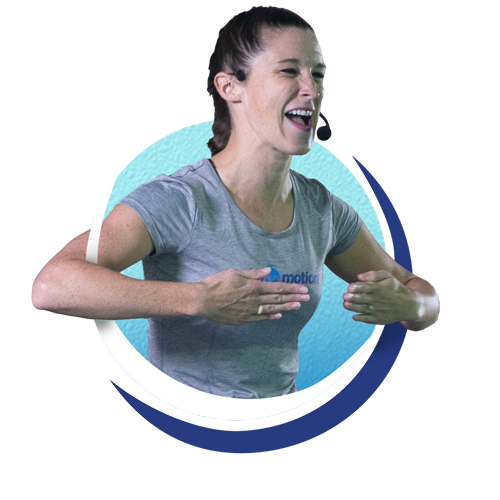
by Connie Warasila
Music is a strong motivator for people, especially those who start moving when they hear the first beat. English Playwright, William Congreve said, “Music hath charms to soothe a savage beast, to soften rocks, or bend a knotted oak.” In other words, encourage humans to move their bodies! Music has the power to elicit emotions or feelings. It can take your mind to another place.
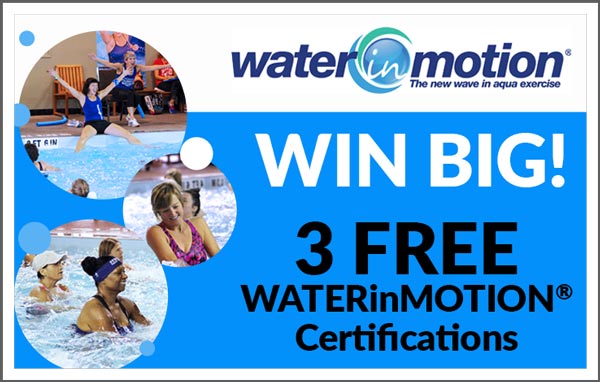 Music should be chosen to create mood, enjoyment, and fun. It is true that people are affected differently by various types of music, so try to modify the music selection to appeal to a wide audience. There are some characteristics to look for when using music for exercise, such as tempo, phrasing, song parts, song length, arrangement, lyrics, rhythm, and energy level, to name a few. An understanding of these features will help you lead a motivating exercise session.
Music should be chosen to create mood, enjoyment, and fun. It is true that people are affected differently by various types of music, so try to modify the music selection to appeal to a wide audience. There are some characteristics to look for when using music for exercise, such as tempo, phrasing, song parts, song length, arrangement, lyrics, rhythm, and energy level, to name a few. An understanding of these features will help you lead a motivating exercise session.
While many factors are important when choosing music for fitness movement, one of the most important items to be aware of is tempo which refers to the speed or rate of the beat in the song. It is measured by beats per minute (BPM). A warmup track should be slightly slower than the cardio portion of the workout and the flexibility track should be even slower. For example, the Warm-Up in WATERinMOTION® is 136 BPM and the other cardio tracks are 140 BPM. The tracks for muscle isolation are 132 BPM. These different tempos are helpful for effective water exercise. Water’s resistance makes it very difficult to move to every beat of music which is referred to as land tempo, so aqua exercise uses ½ land tempo, moving on every other beat. Occasionally land tempo can be used in a water fitness class, to add extra challenge and raise the heart rate even more.
In addition to tempo, the structure of music and its ability to motivate exercisers plays a strong role. This is referred to as phrasing or how the beats in music are arranged into groupings. Some movement forms use 6 beats of music for a phrase, i.e., the waltz (1-2-3, 4-5-6; with emphasis on beats 1 & 4). Yet, traditional exercise forms use 8 beats for a phrase,
1-2-3-4, 5-6-7-8 with the largest emphasis on beats 1 & 5, and a lesser emphasis on 3 & 7). All WATERinMOTION® music is arranged in 8-count phrasing. It is extremely important to recognize, feel, and cue the beginning of each phrase to create a synergistic and exciting group exercise experience.
Song length is also a factor to be considered when designing music. A longer song, maybe seven to nine minutes, might be great for an intense climb in a cycle class but may prove monotonous in other workout forms. Structuring an exercise session around the purpose of each track helps to keep clients attentive, willing to focus for a short time, and entertained. Staying on one skill, or purpose, for about 5 minutes allows the instructor to fully explore basic movements, progressions and regressions and motivational feedback. Then, it’s time to move on to a new focus. This keeps the momentum of the class moving forward.
The arrangement of the song parts within the 5-minute song has become a mechanism for remembering your choreography. Most songs include these parts: introduction, verse, chorus, bridge, and in WATERinMOTION® music, the last beat is a final pose. The introduction is the lead in music at the beginning of the song. It is typically 2 phrases of 8 counts each. The next three song parts occur in predictable patterns, but not always in the same order. The verse is the part of the song that has a consistent melody (the tune) but different lyrics (words). The chorus has a consistent melody and the same or similar words. The bridge is the part of the song that sounds quite different from the verse and chorus. It is usually used to heighten excitement. The final pose is 1 beat used to “strike a pose” that makes a statement about the accomplishment of the track.
As mentioned, lyrics are the words sung in a song. Consideration about what the lyrics say is imperative when choosing music for group exercise. Appropriate and uplifting content assists in creating a positive fitness environment. The lyrics also assist the instructor in remembering the choreography. WATERinMOTION® choreography is designed to use the words of the song to inspire the moves. If the lyrics have “rock” or “jump” in them, then a rocking horse or jump may be chosen for that part of the song. Instructors should use the lyrics not only to remember the moves, but also to motivate students. You may even catch them singing along and having a good time!
Like lyrics, rhythm is a musical element that can be highly motivating. It is the arrangement and/or accent of the beats in music. Syncopation (off beat rhythms), mixing slow and fast beats and recurring rhythm patterns add interest and entertainment to a workout, keeping your class focused. Familiar dance rhythms, like the Cha Cha (fast, fast, slow) are commonly used in group fitness to boost the “FUN” element. Plus, changing rhythms can also boost agility.
Lastly, the general energy of a song can “make or break” an exercise experience. A song might have the right BPM but still lack energy to motivate exercisers. While everyone reacts differently to various styles of songs, most people are stimulated by high energy music.
When these music characteristics all come together, they create an exercise session full of drive and motivation. Choosing music with the appropriate tempo, arranging the phrasing, determining song length, arranging the song parts, reviewing lyrics, including interesting rhythms and finding energetic songs makes the playlists for group exercise classes stimulating and entertaining. Make the most of the music to boost not only your success as an instructor, but the confidence and connectivity of your participants. Let the music drive and take you further than imagined.
Fitness music sources are readily available online for both downloadable and purchased CDs. Muscle Mixes Music recently introduced their newly revised phone app, Muscle Mix Now 2, to help create the perfect playlist to motivate your participants. Take control of the songs, tempo, order, and much more to build unlimited custom mixes uniquely designed for each and every class.
 About the Author, Connie Warasila
About the Author, Connie Warasila
Connie Warasila is the choreographer emeritus for WATERinMOTION®, faculty member of SCW Fitness Education, and certified by ACE, AEA, AFAA, Balanced Body, The Braining Center, Yoga Fit, Schwinn®, Reebok Cycle, and Moms in Motion. Awarded the Aquatic Exercise Association Fitness Professional of the Year, Connie has over 30 years of teaching experience in the USA and abroad. She has recently decided to further her education and pursue a degree in Finance and Accounting to help the fight against Human Trafficking.
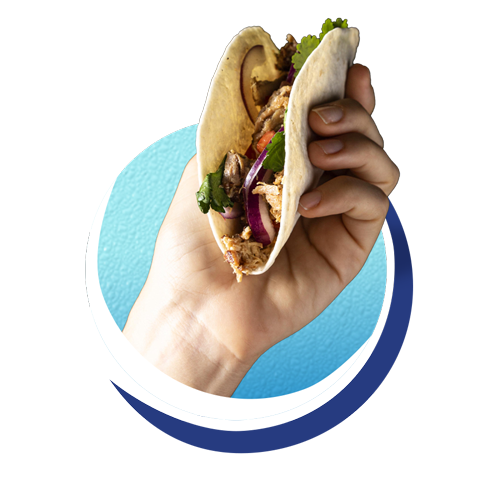
Getting enough daily protein can be a challenge for many people, especially those who have restricted diets. When you see a can of tuna, which is packed with protein, you probably think boring tuna salad, but it doesn’t have to be. Tuna can be used in a variety of ways, and stuffed into a tortilla, with taco accompaniments is fun, simple, and fast, especially for those on the go.
- 1 package tortillas (medium size- white or whole wheat)
- 1-2 cans of tuna fish (any type, but Albacore is firmest)
- Can of black beans
- Shredded lettuce (any type will do)
- Shredded cheese (any flavor)
- Diced tomatoes (canned or fresh)
- Chopped onion
- Taco sauce or taco seasoning
- Sour cream
DIRECTIONS (optional taco holder for building):
- Place tortillas in taco holder or on a plate
- Open can of tuna and drain water (option to warm in microwave.)
- Mix small amount of taco seasoning to tuna (or add taco sauce at end) and scoop two spoonfuls to the soft tortillas.
- Open black beans, drain water and rinse (option to heat). Spread layer on tuna.
- Continue building taco with desired toppings finishing with taco sauce on top.
Tacos aren’t just for Tuesdays, and fish tacos are a tasty change from ground meat or turkey. Changing up a meal not only provides different nutrients, but it also adds variety and satiety to fill a hungry belly.
We’re always looking for great content highlighting the newest things in the world of aquatic fitness. Please submit your article directly to editor@scwfit.com for immediate consideration!
Give us your feedback on what interests you, and maybe YOU will make it in the SCW Tidal Waves!
Tidal Waves, January 2025
Tidal Waves, November 2024
Tidal Waves, October 2024
Tidal Waves, June 2024
Tidal Waves, May 2024
Tidal Waves, April 2024
Tidal Waves, March 2024
Tidal Waves, February 2024
Tidal Waves, January 2024
Tidal Waves, December 2023
Tidal Waves, November 2023
Tidal Waves, October 2023
Tidal Waves, September 2023
Tidal Waves, August 2023
Tidal Waves, July 2023
Tidal Waves, June 2023
Tidal Waves, May 2023
Tidal Waves, April 2023
Tidal Waves, March 2023
Tidal Waves, January 2023
Tidal Waves, November 2022
Tidal Waves, September 2022
Tidal Waves, July 2022
Tidal Waves, June 2022
Tidal Waves, May 2022
Tidal Waves, April 2022
Tidal Waves, March 2022
Tidal Waves, February 2022
Tidal Waves, January 2022
Tidal Waves, November 2021
Tidal Waves, October 2021
Tidal Waves, August 2021
Tidal Waves, July 2021
Tidal Waves, June 2021
Tidal Waves, May 2021
Tidal Waves, April 2021
Tidal Waves, March 2021
Tidal Waves, January 2021

